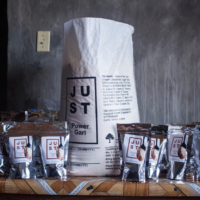Every week we track the business, tech and investment trends in CPG, retail, restaurants, agriculture, cooking and health, so you don’t have to.
The two major plant-based food brands, Impossible Foods and Hampton Creek, made headlines in last week’s top CPG news. The meatless burger’s CEO and founder, Pat Brown, released an open letter defending the company’s safe human consumption of soy leghemoglobin, after a New York Times article had raised doubt due to FDA concerns. Two anonymous letters addressed from their CEO Josh Tetrick claimed the eggless mayo products were unsafe and mislabeled, causing items to be pulled from Target shelves. Despite recent qualms about the company’s survival, it recently announced potential licensing agreements with global meat companies interested in its lab-grown meat technology. Mars food closed a deal to acquire Preferred Brands International, maker of Tasty Bite Indian and Asian products, for an undisclosed amount.
In retail news, Amazon is said to be exploring a new technology that will preserve the flavor and nutrient content of ready-to-eat meals for up to a year. A former VP of marketing and advertising consultant went undercover to find out what brands are actually behind Trader Joe’s snacks, revealing a rich list of common products disguised inside Trader Joe’s branded packaging.
Chemical giant, DuPont, announced its buy out of the farm management software startup, Granular, supplementing its existing digital agriculture agronomy product Encirca services.
Lastly, the New York Times shares a growing number of doctors and medical groups that are going one step further to improve patients’ nutrition and overall health by teaching them how to cook.
Check out our weekly round-up of last week’s top food startup, tech and innovation news below or peruse the full newsletter here.
Our newsletter is the absolute easiest way to stay on top of the emerging sector, so sign up for it today and never miss the latest food tech and innovation news and trends, Already signed up? Share the love with your friends and colleagues!
_______________
1. Speaking Broadly: The Future of Food Is Personal – Heritage Radio Network
To help us understand what lies ahead, and to accelerate the good food movement, Danielle Gould shares her thoughts about individualized nutrition, biomes, urban farms and more.
2. Impossible Burger’s ‘Secret Sauce’ Highlights Challenges of Food Tech – New York Times
The FDA has expressed concern over soy leghemoglobin, a lab-made substance found in the roots of soybean plants, stating that it has never been consumed by humans and may be an allergen.
3. An Open Letter from our CEO – Pat O. Brown, Impossible Foods
Brown states the NYT article was chock full of misrepresentations and instigated by an extremist anti-science group. Three food-safety experts concluded that soy leghemoglobin is generally recognized as safe (GRAS) for human consumption.
4. Hampton Creek Discussing Partnerships with Global Meat Companies – Food Dive
The plant-based company is in talks with 10 global meat and feed companies in South America, Europe and Southeast Asia about licensing its lab-grown meat technology.
5. Amazon Said to be Exploring Refrigeration-Free Prepared Meal Tech – TechCrunch
Amazon is looking at using a military-designed tech called ‘microwave assisted thermal sterilization’ (MATS) to create ready-to-eat meals that have a shelf life of up to a year.
6. What Brands Are Actually Behind Trader Joe’s Snacks? – Eater
Trader Joe’s orders most of its products from third-party manufacturers, which agree to sell some of their items under the Trader Joe’s label in confidence. Eater used FDA and USDA recalls and alerts to find out companies like Naked Juice, Tribe Mediterranean Foods, and ConAgra have supplied the retail chain.
7. A Mysterious Anonymous Letter Was Allegedly Behind Target’s Decision to Stop Selling Hampton Creek – BuzzFeed
Two anonymous letters addressed from CEO Josh Tetrick were sent to an unnamed major retailer and Target claiming that Hampton Creek had contaminated and mislabeled products, causing Target to recall their products early this summer.
8. DuPont Acquires Farm Management Software Granular for $300m – AgFunderNews
Granular’s farm management software enables farmers to manage their operations and analyze their financials for each of their fields in real time as well as create reports for third parties like landowners and banks.
9. Mars Food Agrees to Acquire Maker of Tasty Bite Brand of Indian and Asian Products – Chicago Tribune
Mars food will acquire Preferred Brands International for an undisclosed amount, expanding their all-natural vegetarian offerings in the US.
10. When the Prescription is a Recipe – New York Times
After years of telling patients to skip junk food and prepare homemade meals, a growing number of doctors and medical groups are now going a step further and teaching them how to cook through teaching kitchens, food pantries, prescribing culinary education programs and culinary curriculums for doctors.






